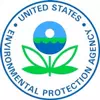Regulated Medical Waste — Overview
What is Regulated Medical Waste (RMW)?
Regulated medical waste (RMW), also known as 'biohazardous' or 'infectious medical' waste, represents the portion of the waste stream that may be contaminated by blood, body fluids, or other potentially infectious materials. This type of waste poses a significant risk of transmitting infection.
There are several key categories of waste typically classified as 'regulated,' and each generally has special handling requirements that can vary from state to state. For more information on specific classifications, refer to the Types of Regulated Medical Waste page.
Most state laws require that RMW be rendered non-infectious before it can be disposed of as solid waste. Details on these procedures can be found on the RMW Treatment and Disposal page.
RMW is unique to the healthcare sector and presents a number of compliance challenges. Unlike many healthcare regulations, most rules governing medical waste are defined at the state level rather than the federal level. Adding to the complexity, authority for medical waste regulations often comes from multiple state agencies.
Federal law does not provide an explicit definition of medical waste. Typically, State Departments of Health issue regulations that determine which wastes are considered 'regulated' or require special handling. To find state-specific definitions, use the RMW State Locator.
It is not always clear how overall rules apply to specific situations. The RMW State Locator offers contact information for individuals in state agencies who can help resolve interpretation questions.
In the late 1980s, when the current system of medical waste regulation was being developed, the EPA played a central role. The regulatory pattern was similar to other forms of environmental regulation, such as for air emissions and solid waste: a general framework was developed at the federal level and then adopted, with minor variations, by each state. However, after this initial phase, the regulatory framework for medical waste evolved differently, leaving considerably more discretion to individual states.
During the 1980s, public awareness of medical waste increased due to incidents such as used syringes and similar wastes washing up on East Coast beaches. In response, Congress enacted the Medical Waste Tracking Act (MWTA), which required the EPA to create a two-year medical waste demonstration program. The MWTA:
-
Identified which wastes would be regulated
-
Established a cradle-to-grave tracking system based on a generator-initiated tracking form, similar to RCRA manifests for hazardous waste
-
Required management standards for segregation, packaging, labeling, and storage of waste
-
Established record-keeping requirements
-
Defined penalties for mismanagement
These standards were in effect in New York, New Jersey, Connecticut, Rhode Island, and Puerto Rico from June 1989 to June 1991. During this period, the EPA gathered information and conducted several studies related to medical waste management.
The EPA concluded that the disease-causing potential of medical waste is greatest at the point of generation and naturally decreases afterward. Thus, medical waste is considered more of an occupational concern than an environmental concern affecting the general public: the risk to the general public is likely much lower than the risk for those occupationally exposed.
The MWTA and EPA's associated program focused attention on medical waste and provided a model used by some states and other federal agencies in developing their own programs.
Currently, the EPA no longer plays a central role in medical waste regulation; instead, states and other federal agencies have assumed that responsibility. The following summarizes the current regulatory scheme for medical wastes:
State Medical Waste Regulations. Nearly all states have enacted some form of medical waste regulations. Unlike hazardous waste regulations, which are based on federal RCRA standards, state medical waste standards vary widely. Some states have rules modeled after the Medical Waste Tracking Act, while others have little resemblance to it.
In most states, the environmental protection agency is primarily responsible for developing and enforcing medical waste management and disposal regulations. In some states, the department of health plays an important role or even serves as the primary regulatory agency. Where both agencies are involved, the department of health typically oversees on-site management, while the environmental agency manages transportation and disposal.
Most states regulate packaging, storage, and transportation of medical waste. Some require healthcare facilities to register or obtain permits. State rules may also address contingency planning, on-site treatment, training, waste tracking, recordkeeping, and reporting.
OSHA Regulations. OSHA (the U.S. Department of Labor Occupational Safety & Health Administration, or an OSHA state program) regulates several aspects of medical waste, including management of sharps, requirements for containers, labeling of medical waste bags/containers, and employee training. These standards protect healthcare workers from exposure to bloodborne pathogens and help systematically manage waste, benefiting both the public and the environment.
In states with comprehensive regulations, there are often overlaps between state rules and the OSHA bloodborne pathogens standard; however, conflicts are rare. Facilities are advised to follow the more detailed or stringent regulations. In states without comprehensive rules, OSHA standards fill important gaps.
US EPA Regulations. Although the EPA no longer plays a central role in medical waste management, it still regulates emissions from Hospital/Medical/Infectious Waste Incinerators and medical waste treatment technologies using chemicals under the Federal Insecticide, Fungicide and Rodenticide Act (FIFRA).
DOT Regulations. The Department of Transportation defines regulated medical waste as a hazardous material. DOT rules mainly apply to transporters, though healthcare facilities should be aware of them due to liability associated with shipping waste off-site.
The Centers for Disease Control (CDC) also issues guidelines for infection control.
What is Not Regulated Medical Waste (RMW)?
While states outline specific categories of regulated medical waste, it is important for healthcare facilities to understand key concepts to avoid improper segregation of wastes.
One common misunderstanding involves the use of the term 'saturated' to define what material can be considered solid waste versus RMW. In some states, 'saturated' refers back to the OSHA bloodborne pathogen standard, which defines it as "contaminated items that would release blood or other potentially infectious materials in a liquid or semi-liquid state if compressed."
It is a misinterpretation to assume that any medical product coming into contact with blood, body fluids, or other potentially infectious materials automatically becomes RMW, regardless of how minor the contact. The OSHA 'saturation' definition allows most items with trace levels of contamination to be placed in the solid waste stream.
Your state's rules may permit you to handle certain wastes currently treated as medical waste as part of the general solid waste stream. For details on your state's definitions, refer to the RMW State Locator.




